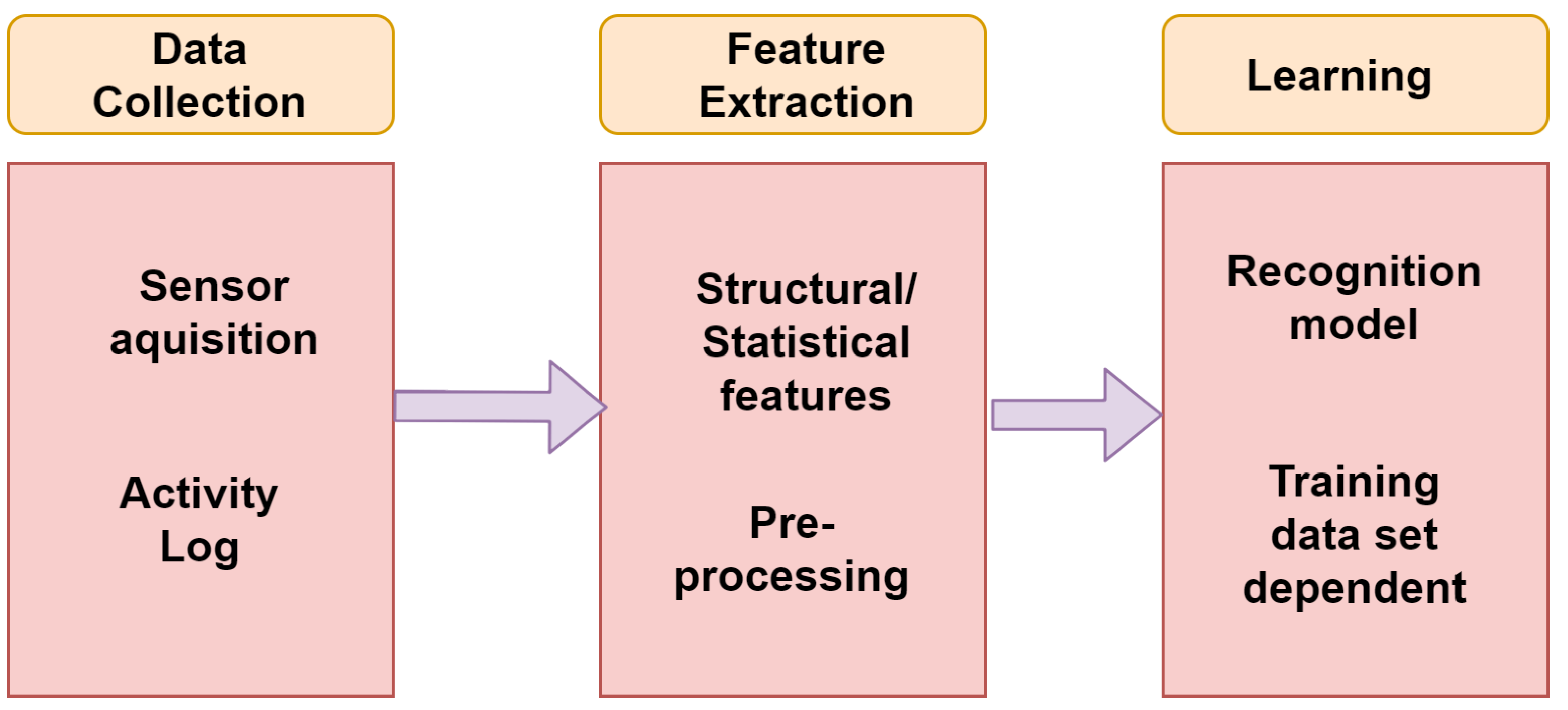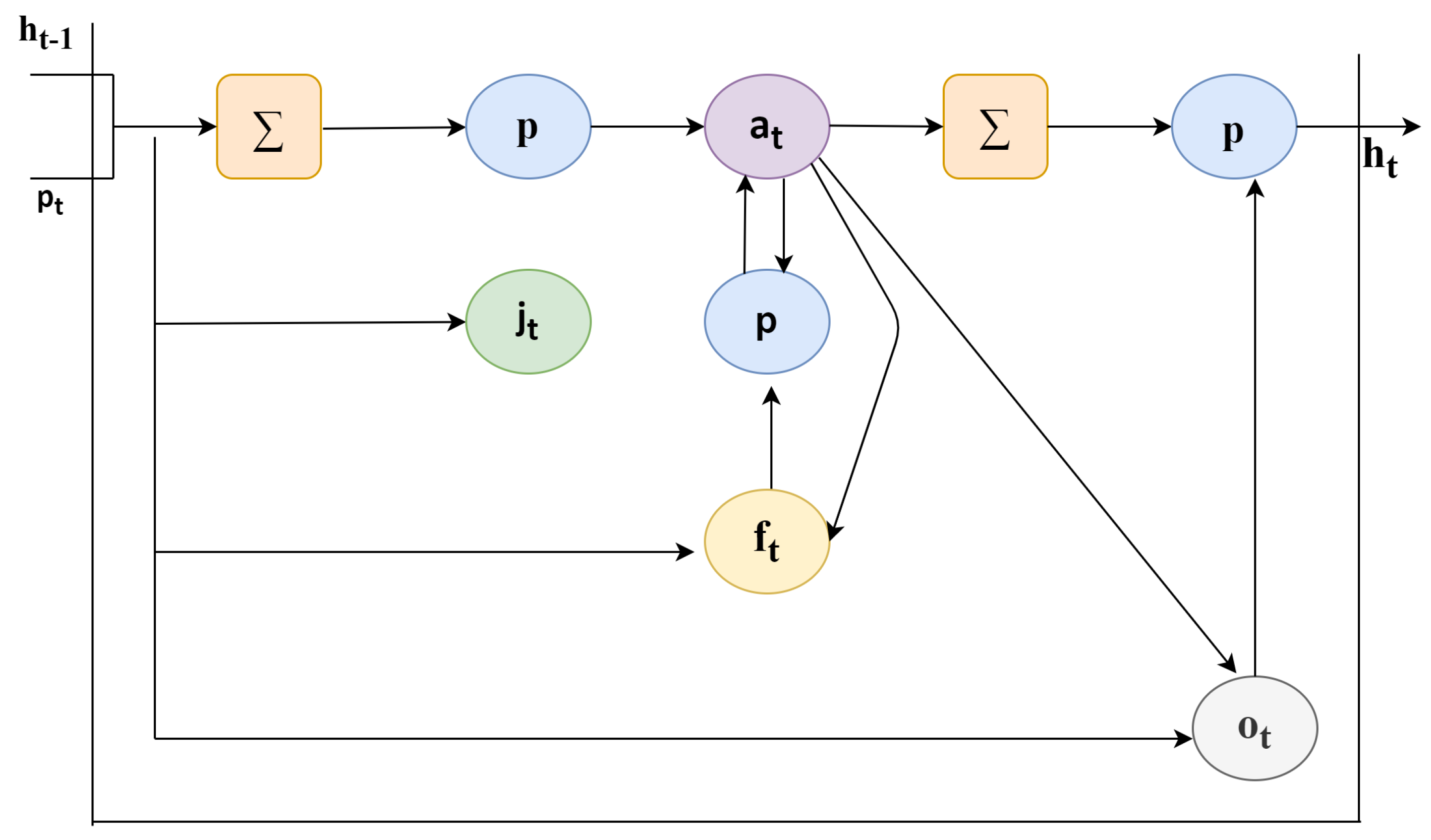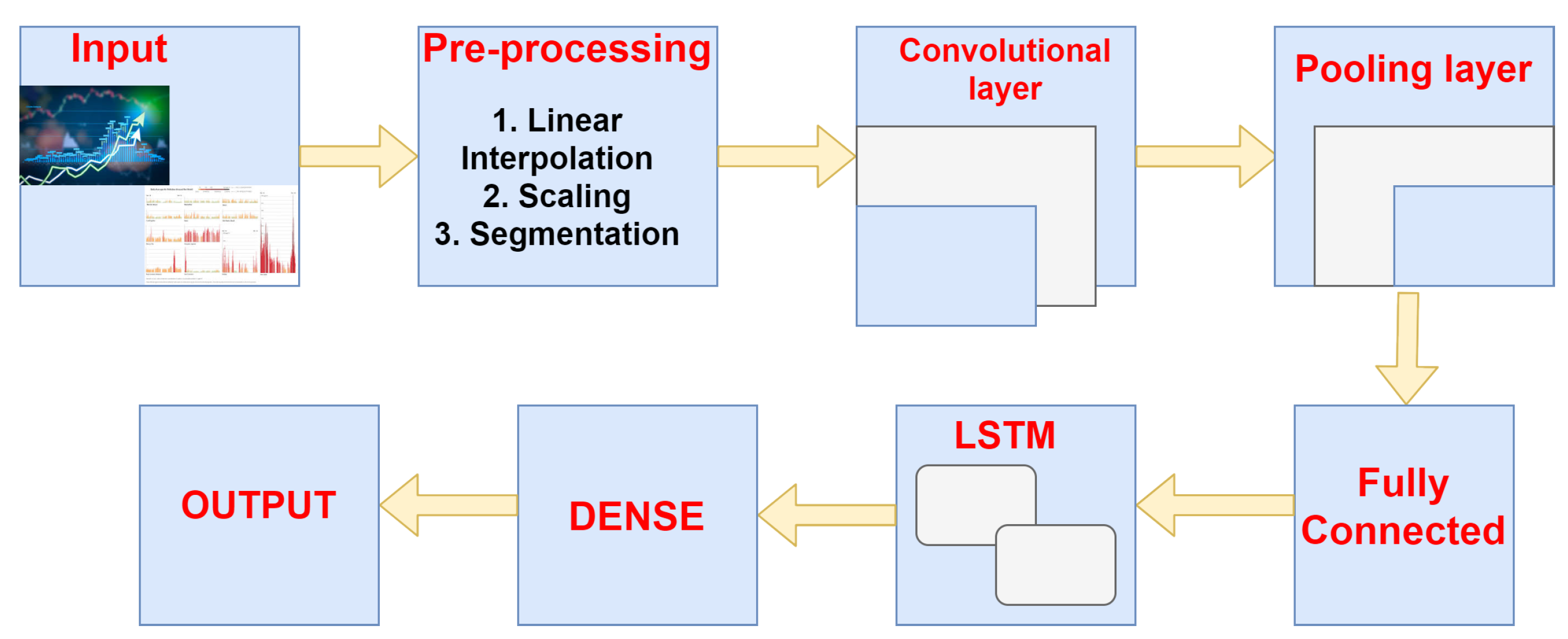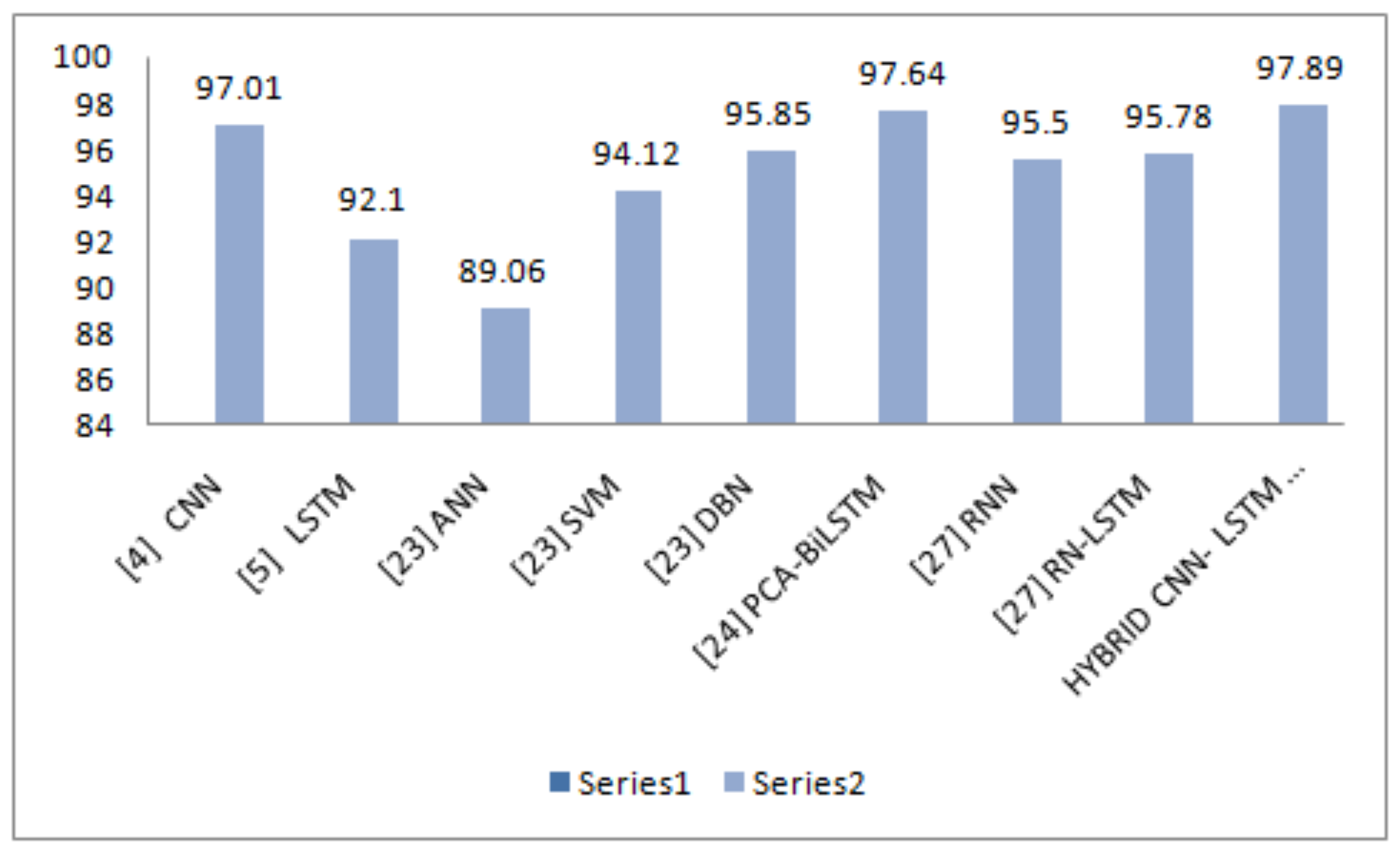An Efficient and Lightweight Deep Learning Model for Human Activity Recognition Using Smartphones
Abstract
1. Introduction to Human Activity Recognition
- Sensor-based—The first HAR approach contains a large number of sensor type technologies that can be worn on-body known as wearable sensors, ambient sensors, and, together, both will make hybrid sensors that help in measuring quantities of human body motion. Various opportunities can be provided by these sensor technologies which can improve the robustness of the data through which human activities can be detected and also provide the services based on sensed information from real-time environments, such as cyber-physical-social systems [4]; there is also a type of magnetic senors when embedded in smartphone can track the positioning without any extra cost [5].
- Vision-based—RGB video and depth cameras being used to obtain human actions.
- Multimodal—Sensors data and visual data are being used to detect human activities.
Contributions of the Paper
- A deep learning neural network based on CNN and LSTM model is used to train and recognize the different phases of human activities which includes the pre-processing of data, collection of data, and extraction of features from UCI-HAR dataset.
- Different deep learning algorithms are implemented to check the accuracy of the proposed model.
- Each input image the convolutional method is applied, and the output of each input image is transferred to the LSTM as a single time step. Filter maps taken as a a most important hyperparameter can be used for mapping of the different portions of an image.
- Transformation on the basis of observations is done by using Gaussian standardization. CNN-LSTM, the proposed model, is efficient and lightweight model and has shown high robustness and better activity detection capability than traditional algorithms by providing the accuracy of 97.89%.
- Next, use of Deep Learning classifiers for attaining the better accuracy and comparison table of the deep learning models is presented for better understanding.
2. Related Work
3. Architecture of HAR
Modules of HAR
- Training or Learning Phase: Recognition algorithm’s first step is training or learning phase. This phase is responsible for building the relationship between data and the activities, which is more clearly seen in Figure 1. Further are the following steps:
- Data Collection: This step acquires systems data from all the sensors available. Sensor selection is based on the type of device for which the recognition system is made for. The following steps contains a log of activities of every activity performed with the type of activity, time, and the respective duration. This step works independently without any signal interference as all these will take place in the next following steps.
- Feature Extraction: This step is fully concerned with the above step as it is dependent on the types of variables and kind of sensors involved in the data collection. It contains both statistical and structural features. Use of signal for any transformation comes under statistical feature extraction. With the help of structural feature extraction, interrelation and correlation among the signals can be found. The features could be mean, standard deviation, or correlation of a signal, and the transformations could be Fourier or Wavelet. In the following step, elimination of noise in the signal and range reduction of signal is done so that better features of any activity can be extracted.
- Learning: The final step is the building of a recognition system learned from a set of data, activity log, and also from the extracted features so that the activities could be properly recognized. The following step is highly dependent on the training dataset. There are many recognition models built based on neural networks, fuzzy logic, and rule tree based on signal parameters, each having its own pros and cons. The best one can be selected based on complexity, resources available, and response time.
- Recognition Phase: The last phase of the human recognition system is done with the help of the training phase that results from which the recognition of activity that can be performed better, as shown in Figure 2, described with the following steps:
- Data Collection: This particular step obtains the data from all those sensors which are available for the process of recognition. Based on a device for which the recognition is made for, the process of sensor selection can be done. In the learning phase, prior knowledge of the activities is a must, but, in the recognition phase, there is not any prior knowledge of the activities performed, which is why no activity log is required. As discussed above, data collection can be done without any signal processing, and that rest all can be done in the next feature extraction step.
- Feature Extraction: This step is fully concerned with the above step as it is dependent on the types of variables and kind of sensors involved in the data collection. It contains both statistical and structural features. Use of signal for any transformation comes under statistical feature extraction. With the help of structural feature extraction, interrelation and correlation among the signals can be found. The features could be mean, standard deviation, or correlation of a signal, and the transformations could be Fourier or Wavelet. In the following step, elimination of noise in the signal and range reduction of signal is done so that better features of any activity can be extracted.
- Recognition: The final step is the speculation of the activity being performed with the help of the integrated data, and features can be extracted based on the prior steps by using recognition model. Depending on a recognition model, the possible activities can be performed with accuracy percentage. This is the most time-consuming step of the human recognition system according to which model is being selected and resources available.
4. Deep Learning in HAR
5. Public Datasets
- Use of noise filters for both accelerometer and gyroscopes pre-processing.
- With 50% of overlapping, data can be segmented into fixed windows of 2.56 s, as well as 128 data points.
- Accelerometer data is partially segmented into gravitational which is also called total and body motion components.
6. Lightweight Deep Learning Classifier Hybrid Model
6.1. Deep Learning Classifier-Convolutional Neural Network (CNN)
6.2. Preparation of Data
6.3. Recurrent Neural Network: LSTM
6.4. Working of CNN-LSTM
- The input part having the spatial structure, such as one-dimensional and two-dimensional images, having structure or pixels in the form of combination of words, paragraph, and can be a document file.
- The input part also consists of temporal structure which can be in form of words in an image or video therefore generating an output in the same form is a challenging task.
7. Results Analysis and Discussions
7.1. Performance Metrics
- Accuracy:“It is defined as the number of correct predictions over total number of True Positive predictions by the model”,where TP = True positive class prediction, TN = True Negative class prediction, FP = False positive class prediction, FN = False negative class prediction.
- Recall:“It is defined as Number of true predictions over actual number of true predictions made by the model”.
- Precision:“It is the number of actual true predictions over total true predictions made by the model”.
- F1 Score:“It is two times the precision and the recall to the sum of precision and recall”.
7.2. Gaussian Graph of HAR
7.3. Experimental Requirements
7.4. Steps to Load the Data
7.5. Configurations Affecting the Model
8. Conclusions
Author Contributions
Funding
Data Availability Statement
Acknowledgments
Conflicts of Interest
References
- Hussain, Z.; Sheng, M.; Zhang, W.E. Different approaches for human activity recognition: A survey. arXiv 2019, arXiv:1906.05074. [Google Scholar]
- Poppe, R. A survey on vision-based human action recognition. Image Vis. Comput. 2010, 28, 976–990. [Google Scholar] [CrossRef]
- Fereidoonian, F.; Firouzi, F.; Farahani, B. Human activity recognition: From sensors to applications. In Proceedings of the International Conference on Omni-layerIntelligent Systems (COINS), Barcelona, Spain, 31 August–2 September 2020; pp. 1–8. [Google Scholar]
- Yang, W.; Liu, X.; Zhang, L.; Yang, L.T. Big data real-time processing based on storm. In Proceedings of the 12th IEEE International Conference on Trust, Security and Privacy in Computing and Communications, Melbourne, VIC, Australia, 16–18 July 2016; pp. 3601784–3601787. [Google Scholar]
- Ashraf, I.; Zikria, B.Y.; Hur, S.; Bashir, K.A.; Alhussain, T.; Park, Y. Localizing pedestrians in indoor environments using magnetic field data with term frequency paradigm and deep neural networks. Int. J. Mach. Learn. Cybern. 2021. [Google Scholar] [CrossRef]
- Gope, P.; Hwang, T. Bsn-care: A secure IoT-based modern healthcare system using body sensor network. IEEE Sens. J. 2015, 16, 1368–1376. [Google Scholar] [CrossRef]
- Wang, Z.; Yang, Z.; Dong, T. A review of wearable technologies for elderly care that can accurately track indoor position, recognize physical activities and monitor vital signs in real time. Sensors 2017, 17, 341. [Google Scholar] [CrossRef] [PubMed]
- Lara, O.D.; Labrador, M.A. A survey on human activity recognition using wearable sensors. IEEE Commun. Surv. Tutor. 2013, 15, 1192–1209. [Google Scholar] [CrossRef]
- Chen, Y.; Zhong, K.; Zhang, J.; Sun, Q.; Zhao, X. LSTM networks for mobile human activity recognition. In Proceedings of the 2016 International Conference on Artificial Intelligence: Technologies and Applications, Bangkok, Thailand, 24–25 January 2016; pp. 50–53. [Google Scholar]
- Kwapisz, J.R.; Weiss, G.M.; Moore, S.A. Activity recognition using cellphone accelerometers. ACM SigKDD Explor. Newsl. 2011, 12, 74–82. [Google Scholar] [CrossRef]
- Wang, A.; Chen, G.; Yang, J.; Zhao, S.; Chang, C.Y. A comparative study on human activity recognition using inertial sensors in a smartphone. IEEE Sens. J. 2016, 16, 4566–4578. [Google Scholar] [CrossRef]
- Zebin, T.; Scully, P.; Ozanyan, K.B. Human activity recognition with inertial sensors using a deep learning approach. In Proceedings of the 2016 IEEE SENSORS, Orlando, FL, USA, 30 October–3 November 2016; pp. 1–3. [Google Scholar]
- Lee, S.-M.; Yoon, S.M.; Cho, H. Human activity recognition from accelerometer data using convolutional neural network. In Proceedings of the IEEE International Conference on Big Data and Smart Computing (BigComp), Jeju, Korea, 13–16 February 2017; pp. 131–134. [Google Scholar]
- Aljarrah, A.A.; Ali, A.H. Human activity recognition using pca and bilstm recurrent neural networks. In Proceedings of the 2nd International Conference on Engineering Technology and Its Applications (IICETA), Al-Najef, Iraq, 27–28 August 2019; pp. 156–160. [Google Scholar]
- Xia, K.; Huang, J.; Wang, H. LSTM-CNN Architecture for Human Activity Recognition. IEEE Access 2020, 8, 56855–56866. [Google Scholar] [CrossRef]
- Agarwal, P.; Alam, M. A lightweight deep learning model for human activity recognition on edge devices. Procedia Comput. Sci. 2020, 167, 2364–2373. [Google Scholar] [CrossRef]
- Zebin, T.; Scully, P.J.; Peek, N.; Casson, A.J.; Ozanyan, K.B. Design and implementation of a convolutional neural network on an edge computing smartphone for human activity recognition. IEEE Access 2019, 7, 385133509–385133520. [Google Scholar] [CrossRef]
- Hassan, M.M.; Uddin, Z.M.; Mohamed, A.; Almogren, A. A robust human activity recognition system using smartphone sensors and deep learning. Future Gener. Comput. Syst. 2018, 81, 307–313. [Google Scholar] [CrossRef]
- Banos, O.; Galvez, J.M.; Damas, M.; Pomares, H.; Rojas, I. Window size impact in human activity recognition. Sensors 2014, 14, 6474–6499. [Google Scholar] [CrossRef]
- Nweke, H.F.; Teh, Y.W.; Mujtaba, G.; Al-Garadi, M.A. Data fusion and multiple classifier systems for human activity detection and health monitoring: Review and open research directions. Inf. Fusion 2019, 46, 147–170. [Google Scholar] [CrossRef]
- Xu, X.; Hua, Q. Industrial big data analysis in smart factory: Current status and research strategies. IEEE Access 2017, 5, 17543–17551. [Google Scholar] [CrossRef]
- Kańtoch, E. Human activity recognition for physical rehabilitation using wearable sensors fusion and artificial neural networks. In Proceedings of the 2017 Computing in Cardiology (CinC), Rennes, France, 24–27 September 2017; pp. 1–4. [Google Scholar]
- Antar, A.D.; Ahmed, M.; Ahad, M.A.R. Challenges in sensor-based human activity recognition and a comparative analysis of benchmark datasets: A review. In Proceedings of the Joint 8th International Conference on Informatics, Electronics & Vision (ICIEV) and 3rd International Conference on Imaging, Vision & Pattern Recognition (icIVPR), Spokane, WA, USA, 30 May–2 June 2019; pp. 134–139. [Google Scholar]
- Chaquet, J.M.; Carmona, E.J.; Fern’andez-Caballero, A. A survey of video datasets for human action and activity recognition. Comput. Vis. Image Underst. 2013, 117, 633–659. [Google Scholar] [CrossRef]
- Faye, S.; Louveton, N.; Jafarnejad, S.; Kryvchenko, R.; Engel, T. An Open Dataset for Human Activity Analysis Using Smart Devices. Available online: https://orbilu.uni.lu/handle/10993/32355 (accessed on 2 June 2021).
- Tang, Y.; Ding, D.; Rao, Y.; Zheng, Y.; Zhang, D.; Zhao, L.; Lu, J.; Zhou, J. Coin: A large-scale dataset for comprehensive instructional video analysis. In Proceedings of the IEEE/CVF Conference on Computer Vision and Pattern Recognition, Long Beach, CA, USA, 15–20 June 2019; pp. 1207–1216. [Google Scholar]
- Oh, S.; Hoogs, A.; Perera, A.; Cuntoor, N.; Chen, C.-C.; Lee, J.T.; Mukherjee, S.; Aggarwal, J.; Lee, H.; Davis, L. A Large-Scale Benchmark Dataset405 for Event Recognition in Surveillance Video. In Proceedings of the CVPR 2011, New York, NY, USA, 21–23 June 2011; pp. 3153–3160. [Google Scholar]
- UCI: Machine Learning Repository. Available online: https://ergodicity.net/2013/07/ (accessed on 2 June 2021).












| Author Name (Year) [Reference No.] | Objective | Proposed Methodology | Pros | Cons |
|---|---|---|---|---|
| Wang et al. (2016) [11] | A feature selection approach for activity recognition and to reduce the smartphone power consumption | A Smartphone-based activity recognition framework is being proposed | Use of built-in accelerometer and gyroscope in smartphones | The power of the triaxial accelerometer and gyroscope in activity recognition still needs more research. |
| Agarwal et al. (2020) [16] | Lightweight Deep learning model for human activity recognition | Uses RNN-LSTM approach | Less computational power and easy deployment on edge-devices | Can be extended to support multi-sensor data. |
| Zebin et al. (2016) [17] | Human Activity Recognition with Inertial sensors using deep learning approach | Use of Convolutional Neural Network | Achieved best results as compared to other methods | For multiple sensors use of CNN-LSTM sequence classifier must be studied. |
| Chen et al. (2016) [9] | Network for mobile human activity recognition | Long-short term memory approach for human activity recognition | Use of tri-axial accelerometers data | Can be extended for multi-sensor data. |
| Lee et al. (2017) [13] | Using tri-axial accelerometers in smartphone recognition of physical activities | Convolutional Neural Network method for HAR being proposed | Achieved accuracy of about 92.71% | Improvement in recognition of human activities needs more accurate results. |
| Hasan et al. (2018) [18] | A Robust Human Activity Recognition System Using Smartphone Sensors and Deep Learning | Smartphone inertial sensors-based approach | Compares different deep learning models | More efficient and complex activity recognition in real-time environments. |
| Aljarrah et al. (2019) [14] | Human Activity Recognition tasks based on wearable sensors data | PCA-BiLSTM approach | Achieves accuracy of about 97.64 | Not suitable for real-time environments. |
| Xia et al. (2020) [15] | Convolutional Neural Network with Long Term Short Memory using three types of datasets and compares accuracy with each of the dataset | CNN-LSTM architecture is being proposed | Achieved different accuracies based on the different datasets | Performance based on different parameters need to be evaluated further. |
| Activity | Samples | Percentage (%) |
|---|---|---|
| Walking | 614,892 | 39% |
| Walking Upstairs | 472,994 | 30% |
| Walking Downstairs | 189,198 | 12.2% |
| Sitting | 126,132 | 8.9% |
| Standing | 96,176 | 6.1% |
| Laying | 78,833 | 5% |
| Activities | Walking | Walking Upstairs | Walking Downstairs | Sitting | Standing | Laying | Prec | F1 | Rec |
|---|---|---|---|---|---|---|---|---|---|
| Walking | 489 | 0 | 7 | 0 | 0 | 0 | 0.99 | 0.99 | 0.99 |
| Walking Upstairs | 4 | 444 | 23 | 0 | 0 | 0 | 0.99 | 0.99 | 0.96 |
| Walking Downstairs | 5 | 1 | 414 | 0 | 0 | 0 | 0.96 | 0.99 | 1.00 |
| Sitting | 0 | 11 | 0 | 432 | 0 | 0 | 0.94 | 0.91 | 0.93 |
| Standing | 1 | 0 | 0 | 0 | 419 | 0 | 0.93 | 0.94 | 0.93 |
| Laying | 0 | 27 | 1 | 0 | 112 | 510 | 0.99 | 1.00 | 0.99 |
| Reference | Model | Accuracy (%) |
|---|---|---|
| [12] | Convolutional Neural Network (CNN) | 97.01% |
| [9] | Long-Short Term Memory (LSTM) | 92.1% |
| [18] | Artificial Neural Network (ANN) | 89.06% |
| Support Vector Machine (SVM) | 94.12% | |
| Deep Belief Network (DBN) | 95.85% | |
| [14] | Principle Component Analysis- Bidirectional Long-Short Term Memory (PCA-BiLSTM) | 97.64% |
| [16] | Feed Forward Convolutional Network (FFCN) | 97.64% |
| Recurrent Neural Network (RNN) | 95.5% | |
| Recurrent Neural Network-Long-Short Term Memory (RNN-LSTM) | 95.78% | |
| Proposed Model | Hybrid Convolutional Neural Network-Long-Short Term Memory (Hybrid CNN-LSTM) | 97.89% |
Publisher’s Note: MDPI stays neutral with regard to jurisdictional claims in published maps and institutional affiliations. |
© 2021 by the authors. Licensee MDPI, Basel, Switzerland. This article is an open access article distributed under the terms and conditions of the Creative Commons Attribution (CC BY) license (https://creativecommons.org/licenses/by/4.0/).
Share and Cite
Ankita; Rani, S.; Babbar, H.; Coleman, S.; Singh, A.; Aljahdali, H.M. An Efficient and Lightweight Deep Learning Model for Human Activity Recognition Using Smartphones. Sensors 2021, 21, 3845. https://doi.org/10.3390/s21113845
Ankita, Rani S, Babbar H, Coleman S, Singh A, Aljahdali HM. An Efficient and Lightweight Deep Learning Model for Human Activity Recognition Using Smartphones. Sensors. 2021; 21(11):3845. https://doi.org/10.3390/s21113845
Chicago/Turabian StyleAnkita, Shalli Rani, Himanshi Babbar, Sonya Coleman, Aman Singh, and Hani Moaiteq Aljahdali. 2021. "An Efficient and Lightweight Deep Learning Model for Human Activity Recognition Using Smartphones" Sensors 21, no. 11: 3845. https://doi.org/10.3390/s21113845
APA StyleAnkita, Rani, S., Babbar, H., Coleman, S., Singh, A., & Aljahdali, H. M. (2021). An Efficient and Lightweight Deep Learning Model for Human Activity Recognition Using Smartphones. Sensors, 21(11), 3845. https://doi.org/10.3390/s21113845








